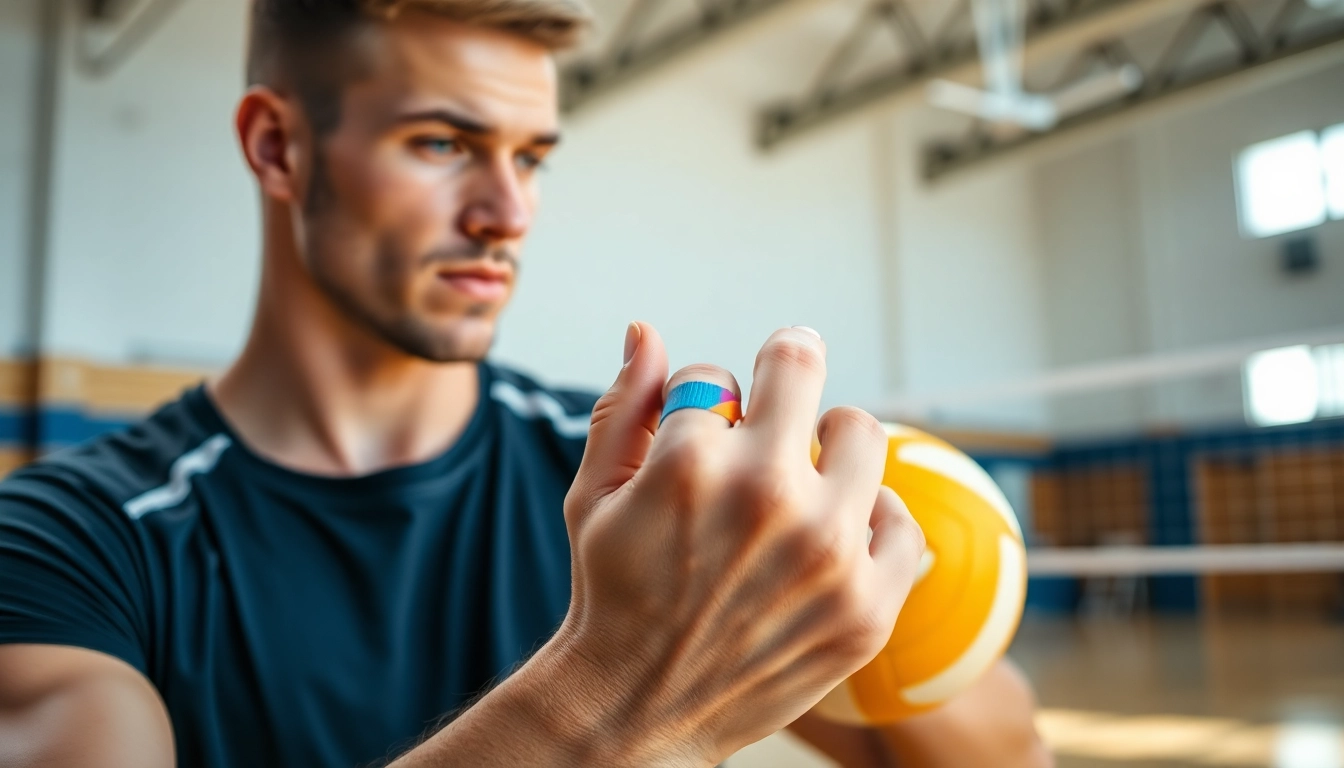Understanding Volleyball Thumb Injuries
Volleyball is a dynamic sport that combines speed, agility, and precision, often putting significant stress on players’ joints, particularly the thumb. Injuries to the thumb are common due to the physical demands of the game, especially during serves, passes, and blocks. As athletes engage in various levels of play, they must understand how to manage these injuries effectively. Volleyball thumb taping is a crucial technique that not only supports injured thumbs but also prevents further damage during play.
The Anatomy of the Thumb and Common Injuries
The thumb comprises several key components: bones, ligaments, tendons, and muscles. Its unique structure allows for a wide range of motion and strength. However, this also means that the thumb is susceptible to injuries such as sprains, strains, and fractures. A common injury in volleyball is a thumb sprain, which occurs when the ligaments are overstretched or torn, often due to impacts during play.
Symptoms of Thumb Strains and Sprains
Players experiencing thumb injuries may notice symptoms such as:
- Pain and tenderness around the thumb joint
- Swelling and bruising
- Reduced range of motion
- Difficulty gripping or holding objects
Recognizing these symptoms early can help players seek prompt treatment and minimize downtime.
Preventive Measures for Volleyball Players
Preventing thumb injuries is just as important as treatment. Volleyball players can take several proactive measures:
- Wearing protective gear such as padded gloves
- Avoiding overexertion and ensuring proper warm-ups
- Practicing proper techniques during play
- Utilizing taping methods to stabilize the thumb
The Importance of Thumb Taping
Taping the thumb before matches or training sessions has become a standard practice among volleyball players. It serves multiple purposes: providing support, reducing strain on ligaments, and preventing potential injuries. Understanding the benefits of thumb taping can enhance a player’s performance and safety on the court.
Why Volleyball Players Use Thumb Taping
Volleyball players often tape their thumbs to protect against injuries that result from repetitive motions or contact with the ball. The tape acts as a supportive structure for the thumb joint, allowing players to maintain their grip without risking further injury.
The Benefits of Taping Your Thumb
There are several advantages to taping your thumb:
- Injury Prevention: Taping provides extra support, reducing the risk of sprains and strains.
- Enhanced Performance: Players can perform better when they feel secure about their injury.
- Post-injury Recovery: Taping can help in managing pain and supporting healing post-injury.
Common Misconceptions About Thumb Taping
Despite its benefits, there are misconceptions surrounding thumb taping. Some believe that taping is unnecessary or that it restricts movement. However, with proper technique, taping allows for mobility while providing vital support.
Step-by-Step Guide to Volleyball Thumb Taping
Gathering Necessary Materials for Taping
Before taping, gather the following materials:
- Sports tape or kinesiology tape
- Scissors
- Adhesive spray (optional)
- Padding or gauze (if needed)
Step-by-Step Taping Instructions
Follow these steps to tape your thumb effectively:
- Start by cleaning the thumb area to ensure the tape adheres well.
- If using adhesive spray, apply it lightly to the area around the thumb joint.
- Cut a strip of tape long enough to wrap around the base of your thumb.
- Apply the tape as an anchor around the wrist, leaving some slack for mobility.
- Wrap the tape around the thumb in a “C” shape, making sure it supports the joint without restricting movement.
- Secure the ends of the tape, ensuring it is snug but not too tight to cut off circulation.
Tips for Ensuring a Secure Tape Application
For optimal tape application:
- Use high-quality sports tape that is specifically designed for athletic use.
- Practice taping techniques to ensure comfort and security.
- Keep your thumb in a neutral position while applying the tape.
Post-Taping Care and Maintenance
How to Care for Your Taped Thumb
Once taped, care is essential to maintain support and prevent skin irritation. Consider the following:
- Avoid excessive moisture to keep the tape intact.
- Monitor for any skin reactions or discomfort due to the tape.
- Replace tape if it becomes loose or wears down during play.
Signs That You Should Remove the Tape
Your thumb tape should be removed if:
- There is significant discomfort or pain.
- Your circulation seems affected (numbness, tingling).
- The tape begins to peel or lose adhesion.
Reevaluating Tape Use After Injury
After an injury, it’s crucial to reevaluate the need for continued taping. Consult with a medical professional or a sports trainer to determine the best approach for recovery, which may involve progressing from taping to strengthening exercises.
Future Trends in Injury Prevention for Volleyball Players
As technology and techniques evolve, injury prevention strategies continue to improve. Volleyball players can expect advancements that further enhance their performance while minimizing risks.
Innovative Taping Products on the Market
New products, such as pre-cut taping kits and advanced kinesiology tape, are available to provide better support and ease of use. These innovations can simplify the taping process and enhance player safety.
The Role of Technology in Sports Injury Prevention
Wearable technology is increasingly being integrated into sports. Devices that monitor movement and biomechanical stress can help players understand their limits and prevent injuries before they occur.
Expert Predictions for 2025 and Beyond
Experts predict that with ongoing research and development, volleyball injury prevention will become more sophisticated, incorporating data analytics and personalized training approaches to maximize player health and performance.
